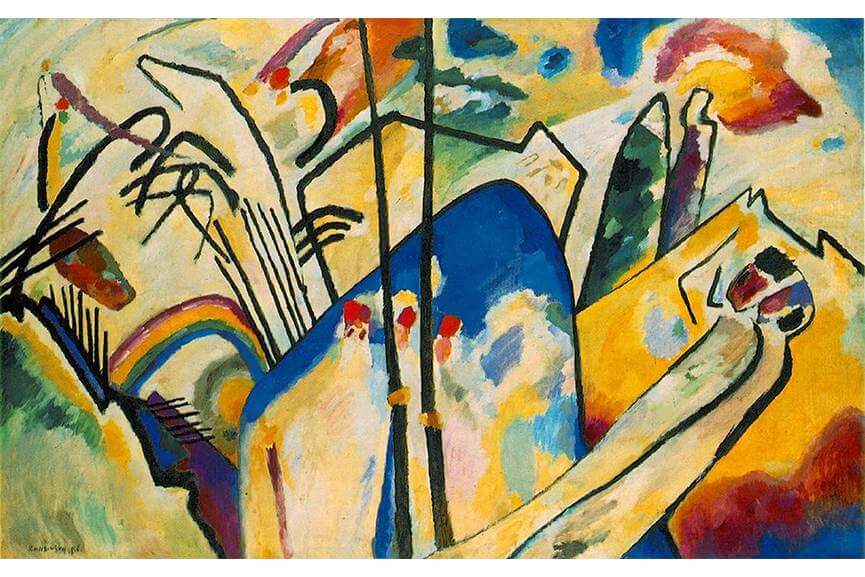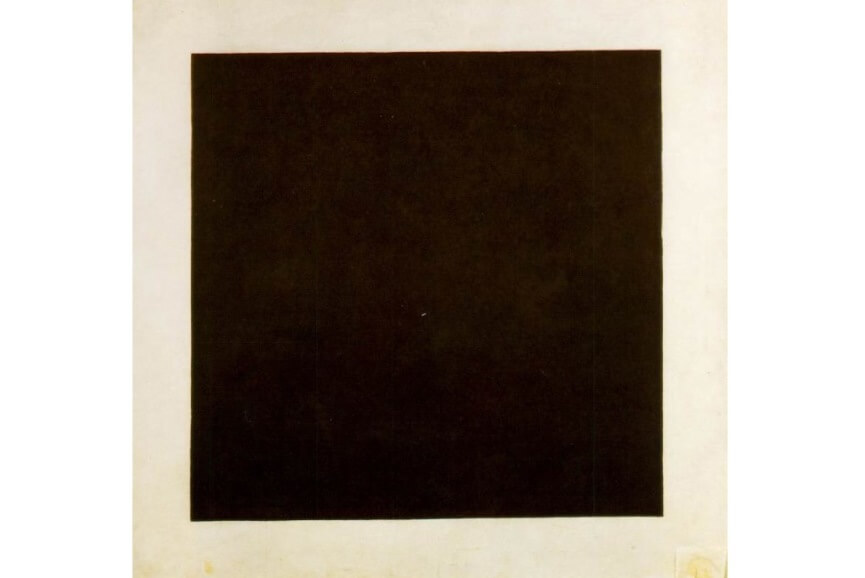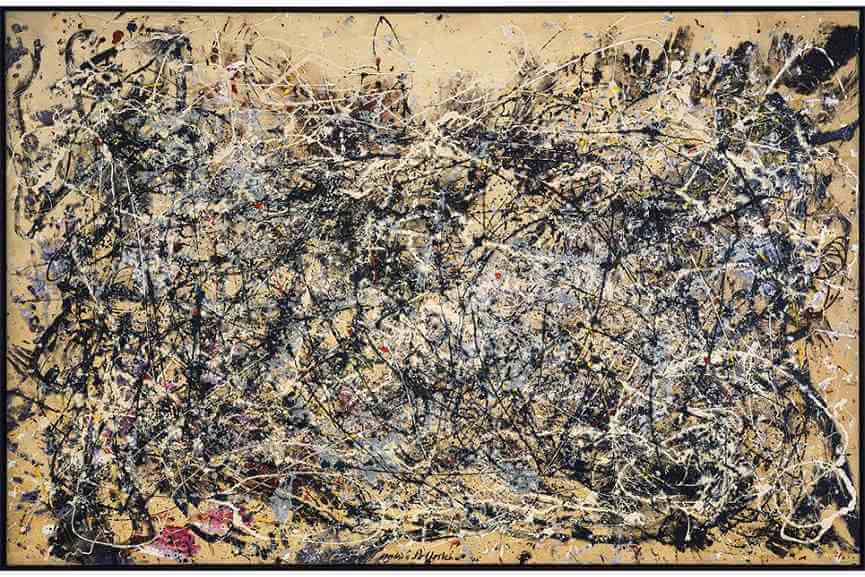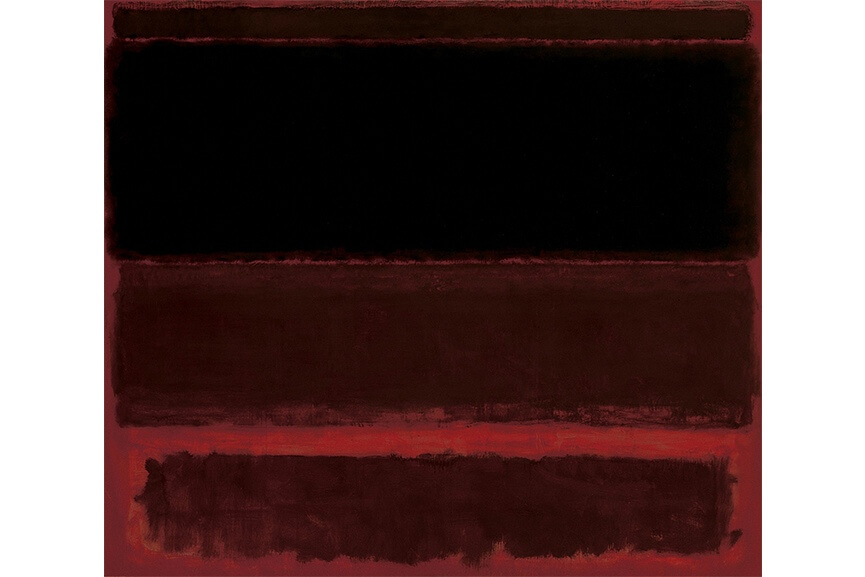
Abstract Painters that Marked the 20th Century
Every painter knows there is no such thing as “the best painter”. Someone would oppose this claim, but it’s true – art is about aesthetical perception, and it’s impossible that all human beings have the same taste. Similarly, there is no authority that would have enough legitimacy to declare someone “the best artist” or some piece “the best artwork”. When we speak about abstract art – one of the most important contemporary art movements – it’s impossible to make a list that would contain the best abstract art painters. There are thousands of amazing abstract art painters, and it would be an impossible task to sort them based on their art’s quality. But, we could try to name those abstract art painters whose practice shaped the development of abstract art. Even this is going to be a challenging task, but let’s try!
Wassily Kandinsky
Wassily Kandinsky is one of the pioneers of abstract art. His practice spans through different abstract art techniques and styles that would later be used by generations of abstract painters. Kandinsky first began to use expressive color masses separating them from forms and lines. Soon after that, he started to merge geometry with abstraction, thus participating in creation of geometric abstract art. Although geometric forms were not something Kandinsky was particularly interested in, in his art we see the first encounters of geometry and abstraction. Finally, his work at the Bauhas cannot be ignored. Here, Kandinsky theoretically examined the use of colors, and under the influence of Gestalt psychology, he began to focus on straight lines, which led to the contrasting tones of curved and angled lines on final compositions.
 Wassilly Kandinsky - Composition IV, 1911. Oil on Canvas. 159.5 x 250.5 cm, Kunstsammlung Nordrhein-Westfalen, Dusseldorf, Germany
Wassilly Kandinsky - Composition IV, 1911. Oil on Canvas. 159.5 x 250.5 cm, Kunstsammlung Nordrhein-Westfalen, Dusseldorf, Germany
Kazimir Malevich
Malevich is also one of the pioneers of abstract painting, but he was also the creator of one of the most radical abstract art movements ever – Suprematism. The main interest of Malevich (and his fellow Suprematist artists) was to search for the so-called zero degree of painting, the point beyond which the medium could not go without ceasing to be art. As a consequence, they used extremely simple motifs, subjects and forms. The whole composition is focused on basic geometric forms, such as circles, squares, lines, and rectangles, painted in a limited range of colors.
 Kazimir Malevich – Black Square, 1915, Oil on linen, 79.5 x 79.5 cm, Tretyakov Gallery, Moscow
Kazimir Malevich – Black Square, 1915, Oil on linen, 79.5 x 79.5 cm, Tretyakov Gallery, Moscow
Jackson Pollock
Unlike Kandinsky and Malevich, the heritage of Jackson Pollock is not to be found in forms, rather in technique. Pollock’s technique determined his unique contribution to contemporary abstract art. Action painting or Gestural Abstraction (that made Pollock famous) is a style used in painting – a style that emphasizes the process of making art, often through a variety of techniques that include dripping, dabbing, smearing, and even flinging paint onto the surface of the canvas. Action Painting is characterized by energetic techniques that depend on broad gestures directed by the artist’s sense of control interacting with chance or random occurrences. It’s about direct, instinctual, and highly dynamic kind of art that involves the spontaneous application of vigorous, sweeping brushstrokes and the chance effects of dripping and spilling paint onto the canvas.
 Jackson Pollock - Number 1, 1948. Oil and enamel paint on canvas.172.7 x 264.2 cm, © 2017 Pollock-Krasner Foundation / Artists Rights Society (ARS), New York
Jackson Pollock - Number 1, 1948. Oil and enamel paint on canvas.172.7 x 264.2 cm, © 2017 Pollock-Krasner Foundation / Artists Rights Society (ARS), New York
Mark Rothko
The art of Mark Rothko is usually linked to the color field painting. Very similar to abstract expressionism, color field painting was popularized by Rothko’s practice to observe color just as an instrument. Rothko used colors as instruments for expressing emotions, but also for other subjects. However, it’s also important to mention Rothko’s famous “mythomorphic” abstractionism. In the core of this style was presentation of archaic forms and symbols as subject matter.
 Mark Rothko - Four Darks in Red, 1958, Oil on Canvas, 102.0 in × 116.0 in, Whitney Museum of American Art, New York
Mark Rothko - Four Darks in Red, 1958, Oil on Canvas, 102.0 in × 116.0 in, Whitney Museum of American Art, New York
Yves Klein
For many, Yves Klein has been associated with minimalism and performance art. However, his legacy within the realm of contemporary abstract art is indisputable. He is probably best-known for his trademark ultramarine pigment, which he patented as International Klein Blue in 1961. As Klein said himself: Blue…is beyond dimensions, whereas the other colors are not. All colors arouse specific ideas, while blue suggests at most the sea and the sky; and they, after all, are in actual, visible nature what is most abstract.
Lucio Fontana
Contemporary abstract art is impossible to be understood if Lucio Fontana legacy is neglected. This famous Italian artist is best-known for being one of the pioneers of Spatialism. The year 1949 marked a turning point in Fontana's career; he concurrently created his first series of paintings in which he punctured the canvas with buchi (holes), and his first spatial environment, a combination of shapeless sculptures, fluorescent paintings, and black lights to be viewed in a dark room. Through this practice, Fontana wanted (and managed) to synthesize color, sound, space, movement, and time into a new type of art.
Featured image: Jackson Pollock - artwork, © 2017 Pollock-Krasner Foundation / Artists Rights Society (ARS), New York
All images used for illustrative purposes only






